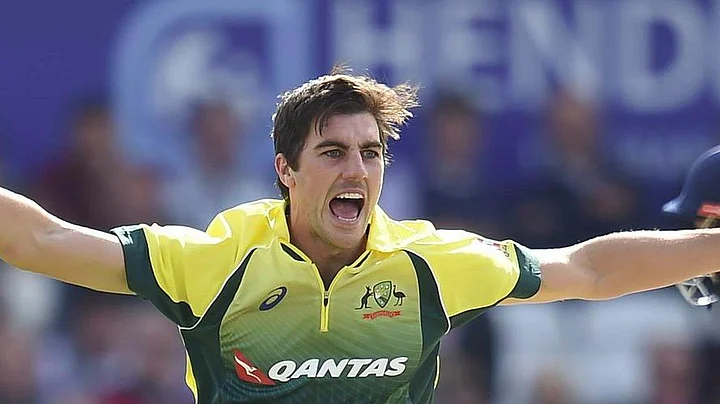Following a sexting scandal and a teary resignation by Tim Paine – Australia’s latest disgraced Test captain – Cricket Australia appointed Pat Cummins as its new Test Captain ahead of the upcoming Ashes series. The appointment makes Cummins the only frontline fast bowler to captain Australia in Tests full-time in 144 years, barring a single Test captained by Ray Lindwall against India in 1956.
Even this appointment has been made in circumstances where Australia's cricket team is desperately seeking to repair its abysmal image after Steve Smith and David Warner – both obvious choices for Paine’s replacement –disqualified themselves from contention for the post after the 'Sandpapergate' scandal, leaving the selectors with a few options.
Nevertheless, Smith has been named vice-captain once again, drawing criticism from the country’s former legends like Ian Chappell.
A Decision Never Made in History of Cricket
The recency of the scandals plaguing Australian cricket aside, Australia’s (non-) history with bowling captains is hardly unique. Even England, the birthplace of the 'Gentlemen’s game,' has had only one frontline bowler, Bob Willis, to have captained the side for any considerable length of time. Across the globe and cricket’s history, the number of captains who were bowlers can be counted on the fingers of both hands, and their appointments have been made under similar 'extraordinary' circumstances.
Shaun Pollock, amongst the handful of bowling captains in recent decades, was appointed after Hansie Cronje’s match-fixing scandal, while Courtney Walsh got the reins following former captain Brian Lara’s run-ins with the West Indies Cricket Board.
Despite nearly 30-40% of any team being composed of bowlers, captaincy has historically been a batter’s prerogative across all formats. Even T20 franchise cricket, whether it be the Indian Premier League (IPL) or the Big Bash, sets examples of this unspoken rule.
Several reasons have been cited over the ages for this discrepancy. For example, fast bowlers face injuries more frequently than their batting counterparts. They also tend to have shorter careers, and their primary skill set is being utilised on the field at the same time when captaincy is most important. Under these circumstances, a fast bowler’s heavy workload on the field can take a toll on their ability to read the game and make critical decisions. Most fast bowlers also tend to field in the deep, keeping them away from the action than, say, a captain standing in the slips or mid-off.
Although these are amongst the technical reasons to be cited in favour of batters as captains, consensus on them is divided at best.
James Anderson expressed disappointment at him and Stuart Broad, both more experienced, being passed over for Joe Root for England’s Test captaincy in 2017.
“Most of the fast bowling captains I've known have been pretty successful and I don't know why it is that more fast bowlers aren't given the opportunity to do it. I'm all for bowlers being captains," Anderson had said then.
'Class Segregation' in Cricket
In the Indian domestic circuit, fast-bowling captains like Mohit Sharma and Jaidev Unadkat have expressed similar sentiments, while Cummins himself has stated that Zaheer Khan’s captaincy in the IPL convinced him that fast bowlers could make great captains.
Anderson also noted that “there are lots of arguments why it would suit to have a bowler as captain, but it's just not the done thing, is it?” while backing Cummins’ appointment. To understand what he meant by this remark, one would have to delve into the history of the 'Gentlemen’s game,' where players were segregated into 'gentlemen' or 'amateurs' versus 'players' or 'professionals.'
The former were middle or upper class, played the sport mostly for the thrill and gallantry of it, and were almost exclusively batters. The 'professionals' came from the lower classes, played the game for a living, and formed most of the bowling cadre of the sport.
As for what empirical evidence suggests, bowlers like Walsh, Wasim Akram, Waqar Younis and several others who captained their Test sides did no worse than when they were not captains, whereas cases of captaincy taking its toll on a batsmen’s ability with the bat are consistently discussed.
Similarly, more fast bowlers field in the inner circle and the slips now than ever before, while batting captains taking matches or an entire series off for rest is also becoming increasingly common.
Under these circumstances, arguments opposing bowlers as captains have a similar ring to them as those made against women and people of colour when running for political office. The racism controversy currently plaguing English cricket, as well as the predominance of Mumbai and Delhi upper-class players in the Indian side, serve as a reminder that remnants of prejudices past are far from gone from the sport.
Having said that, appointments such as Cummins’ and Jason Holder's before him, suggest a long due turn of the tide in the state of affairs. The 'gentlemen’s game' is turning truly 'professional,' and it is a welcome step forward.
(Binit Priyaranjan is a freelance author, journalist, and poet.)
